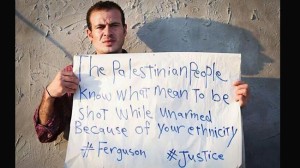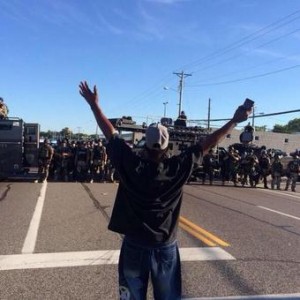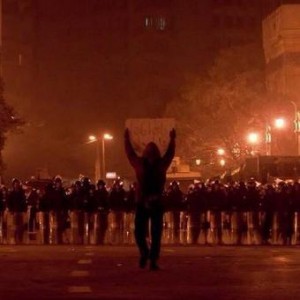One of the “traditions” that has evolved out of the annual New Wine, New Wineskins conference, held recently between July 31-Aug 3 at Notre Dame, is the debates that continue after the presented papers. Often, a circle will form in the basement recreation room at Moreau Seminary as someone brings up a hotly contested point that was left unresolved from the question-and-answer period earlier in the day. These are some of my favorite New Wineskins moments, because, frankly, there is usually enough mutual trust that we’re able to throw down the gauntlet – as it were – and have it out in a solid conversation/argument. But we don’t just leave the room, walk out, and stop talking to those with whom we disagree. At the end of the night we look each other in the eye, remain friends, and come to a better mutual understanding (note that I didn’t necessary say agreement, but understanding). This is really the heart of what New Wineskins is all about. (If you’re a junior scholar in Catholic moral theology, this is your official invite to next year’s conference!)
One of the papers that sparked such heated conversation was raised by Matthew Whalen (Ph.D. candidate at Duke) in his paper, “Violence and the Ordinary.” Whalen drew upon texts from Archbishop Oscar Romero and Catholic Social Thought, and the challenge of land reform in El Salvador to ask the question of what counts as violence? Is violence restricted to physical harm to the body of another being? If so, what distinguishes violence from, say, coercion? Or is violence something that might exist in the absence of direct physical harm to a human body, but which bubbles up and manifests itself in more blatant forms of physical violence? Whalen, following the social analysis of Romero, the Latin American bishops, and other texts from CST, argued that situations of radical injustice like El Salvador call for a deeper analysis of what violence is. Such analysis also helps to explain what might otherwise appear as sudden flare-ups of more physical and blatant expressions of violence.
One of the questions I had during a late-night conversation with Matthew is how this analysis might apply today? My presumption is that it is much easier to view past historical events as expressions of structural violence than it is to identify these structures here and now. I can’t help but to continue asking this question as more overt forms of violence are now springing up in our own nation in Ferguson, MO, and across the globe in Gaza and Iraq.
One of the proposed ways of defining violence (one that I am willing to defend) is that violence is not restricted to physical harm to a human body or bodies. Rather, violence is involved any time a person or a group of persons is excluded from the goods available to the rest of a society. What makes this classify as violence, I propose, is that such persons are excluded against their wills – that is, they are excluded through no choice or fault of their own. This latter point is crucial because if people are excluded through no fault of their own, then this violence/exclusion is unjust. This also helps to explain the distinction between violence and coercion. Violence and coercion both violate the will of the one being forced to do something not of their choosing. But coercion is a just application of force. This example holds for someone justly punished through a legal proceeding. So much for my general analysis. Let’s get down to the nitty-gritty details.
This discussion of violence helps to explain the expressions of violence in Ferguson and Gaza as one facet of an already violent and unjust situation. In each of these cases there are groups of people (blacks, Palestinians) being  excluded from the goods of their communities. Here I think of the personal story that Fr. Bryan Massingale recounts in Racial Justice and the Catholic Church of his father completing his degree in carpentry, but then being excluded from the carpenters’ union because of his black skin. This led to him taking a job as an unskilled laborer with lower pay, less benefits, etc. He and his family (not just his immediate family, but generations) were excluded from a social good. Or consider a recent article by Ta-Nehisi Coates in The Atlantic, where he recounts the ongoing racial discrimination – referred to as “red lining” – in housing loans. It is often hard for middle-class white Americans (myself included) to understand why people get so angry at the injustices they experience day in and day out. But if the ongoing exclusions are seen as more subtle, but no less real, forms of violence to other human persons, then what appear to be “eruptions” of violence such as protests in Ferguson or missile attacks from Gaza, are part of a larger system of violence in which we as an entire society are already participating.
excluded from the goods of their communities. Here I think of the personal story that Fr. Bryan Massingale recounts in Racial Justice and the Catholic Church of his father completing his degree in carpentry, but then being excluded from the carpenters’ union because of his black skin. This led to him taking a job as an unskilled laborer with lower pay, less benefits, etc. He and his family (not just his immediate family, but generations) were excluded from a social good. Or consider a recent article by Ta-Nehisi Coates in The Atlantic, where he recounts the ongoing racial discrimination – referred to as “red lining” – in housing loans. It is often hard for middle-class white Americans (myself included) to understand why people get so angry at the injustices they experience day in and day out. But if the ongoing exclusions are seen as more subtle, but no less real, forms of violence to other human persons, then what appear to be “eruptions” of violence such as protests in Ferguson or missile attacks from Gaza, are part of a larger system of violence in which we as an entire society are already participating.
I’m not claiming to have all the answers for how to move forward and beyond such systemic injustice and violence, but I do think that the question about the nature of what counts as violence raised by Whalen’s paper is one that we need to wrestle with as a culture. In solidarity with the people of Ferguson and Gaza (to the extent possible from someone who has not experienced such violent exclusion), I hope we can ask and address these kinds of difficult questions.





Trackbacks/Pingbacks